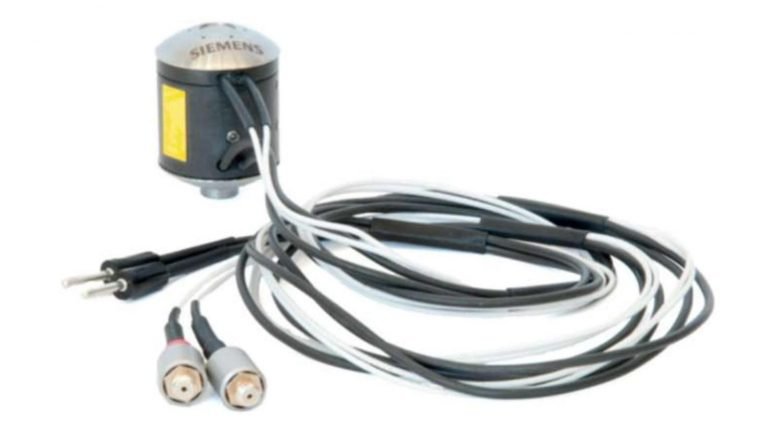Miniature Shaker - Qmsh
The Qsources miniature shaker enables dynamic excitation when conventional shakers have no access and impact hammers are unpractical. This vibration exciter has a low mass and stiffness loading of the test object due to its patented internal decoupling suspension. The miniature shaker is especially suitable for those who plan to perform experimental modal analysis (EMA), transfer path analysis (TPA) and/or frequency-based substructuring (FBS).
The miniature shaker provides you with integrated force and acceleration transducers that allow you to quickly obtain driving point frequency response functions (FRFs). The shaker can be glued directly on the test structure, and needs no extra external support.
Thanks to the patented internal suspension, the inert mass is dynamically decoupled from the test object and the force is always aligned along the internal stinger axis. This significantly improves the efficiency of testing by eliminating the support and alignment work associated with conventional shaker testing.
Features
Compact through high force density
Patented decoupling self-aligning suspension
Integrated high resolution force sensor
Integrated in-line acceleration sensor
Efficient adhesive attachment in any inclination
High repeatability trough accurate positioning capability
Measurement techniques
Transfer Path Analysis and sub-structuring
Inverse source or load identification
Experimental Modal Analysis
Statistical Energy Analysis and equivalent
Numerical model correlation and improvement
Main characteristics
Typical test-object mass 2.5 to 2000 Kg
Extended frequency range 50-6300 Hz**
Core frequency range 200-5000 Hz*
Broadband random 2 N RMS force level
Sine at 100 Hz, 11 N peak to peak force level
Coupled mass 5.0 gr
Shaker diameter 27 mm
Availability
The Qhsh shaker is marketed in cooperation with Siemens under the Simcenter Qsources product line
*What is core frequency range?
If a very high accuracy is essential it is advised to remain within the core frequency range for the typical test-object mass range. This is the range frequency range where the shaker was designed for and also has its highest force level.
**What is extended frequency range?
High accuracy in the extended frequency range is possible on the heavier objects. In some applications on lighter objects, like troubleshooting, fast application on many locations is needed. Or in some applications, like load identification and transfer path analysis, access is only possible with a small shaker. In those cases a lower accuracy or higher risk of error is accepted and the extended frequency range is used.
In all cases a reciprocity verification and two shaker coupling/decoupling verification can be applied to prevent misinterpretation of measurement results.







